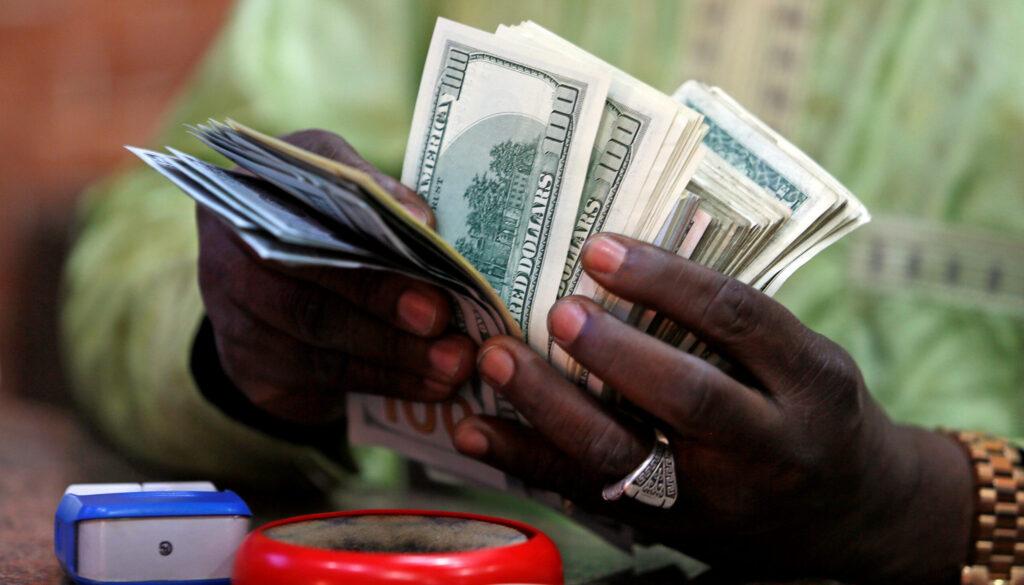Africa-Press – Lesotho. High inflation and subsequent interest rate hikes in the US have had huge knock-on effects across the globe. Africa will need to shift dwindling financial resources to more productive uses if it is to emerge from the current crisis with optimism.
Contagion from developed economies has spilled over into Africa. In Ghana, price growth for August was 33.9%, Ethiopia 32.5%, Nigeria 20.5%, and Rwanda 20.4%. Echoing the US Federal Reserve, a number of central banks across the continent have hiked interest rates to help tame inflation.
So far, the move has done little to stem the mounting crisis. Rising food and energy prices are draining government coffers and fuelling a cost of living crisis across the continent, which will push hundreds of thousands of people back into poverty.
Lower economic growth means fewer jobs, and people without income.
David Malpass, president of the World Bank Group, wrote in his forward of the most recent ‘Poverty and Shared Prosperity’ report that “the global goal of ending extreme poverty by 2030 would not be achieved”.
Given current trends, says the report, “574 million people – nearly 7% of the world’s population – will still be living on less than $2.15 a day in 2030, with most in Africa”.
Another World Bank publication, the African Pulse report that was published on 4 October, makes for a more depressing reading. The Bank has revised economic growth projections for Africa down by 0.3 percentage points since its last estimate in April this year, predicting growth to reach just 3.3% in 2022 – down from 4.1% in 2021.
“Lower economic growth means fewer jobs, and people without income,” says Andrew Dabalen, the World Bank’s Africa Region chief economist. “And then if we take into account population growth, you are actually looking at around 0.7% per capita income growth in 2022, which will not be enough for families and workers to pull themselves out of poverty.”
“It looks like there will be more to come,” Razia Khan, chief economist and head of research, Africa at Standard Chartered says in reference to the Federal Reserve hiking interest rates. “The rest of the world is just going to have to get used to the fact that we’re in an environment of much less accommodative monetary policy than we have seen over the last decade.”
Layered on top of Africa’s current economic woes is the mounting threat of climate change. Droughts across the Sahel are becoming much more frequent as global temperatures rise, stifling food production and distribution. In the Horn of Africa, more than 37 million people face acute hunger, with approximately 7 million children under the age of five acutely malnourished, according to data from the UN.
At the other end of the spectrum, floods, and landslides in West Africa have taken away lives and livelihoods as homes and livestock have been swept away. South Africa has also suffered from relentless flooding this year, which, in April, left 448 people, displaced over 40,000 people, and completely destroyed over 12,000 houses in the south-eastern part of the country.
To build resilience and strengthen their economies, “governments must reprioritise the amount of spending they have control over to support high value investments in, for example, agriculture to establish food security over the long term,” says Dabalen. “They must also invest in supporting long term growth, human capital, and infrastructure; and the diversification of trade partners is also important,” he says.
How? Policymakers’ ability to invest in structural change is shrinking as they grapple with rising costs and struggle to repay international debt. Borrowing more from the capital markets is more or less off the table, with some governments unwilling to pay the high price tag attached to bond issuance. With a number of bonds reaching maturity in 2024 and 2025, unless inflation in the US collapses, refinancing costs for African debt will be huge.
governments went on a borrowing spree because we all thought that interest rates would stay low “Debt stress that African countries are currently under is only going to get worse” says Charlie Robertson, global chief economist and head of macro strategy at Renaissance Capital.
“This also means that the continent’s ability to transition from fossil fuel to renewable energy sources and central to COP27 discussions will also be limited. If you can’t pay your existing debts, how are you going to fund new renewable projects?” he says.
Debt forgiveness may be one option used to strengthen African economies. In August this year, China announced it would forgive 23 loans affecting 17 African countries. In May 2020, the Debt Service Suspension Initiative (DSSI) from the World Bank provided some respite to African countries in order to tackle the fallout of the global pandemic.
“There was a lot of debt forgiveness in the 2000s, and then governments went on a borrowing spree because we all thought that interest rates would stay low,” says Robertson.
“But what Africa hasn’t been able to do is transform debt into export growth; so the question is, if you forgive this debt again, will history repeat itself? This is why developed countries have chosen to redistribute Special Drawing Rights via the IMF and other development institutions because there needs to be some control around how funds are used and managed,” he says.
Debt restructuring is another possibility. When Zambia became the first African country to default following the Covid-19 pandemic, the IMF swooped in and as of September this year, has agreed to a $1.3bn facility to help rebuild its economy. There are examples of African countries that will be able to weather the storm
“When you have bilateral donors, multilateral donors and private creditors, coordination and agreeing a consensus position on how to proceed will inevitably take time,” says Dabalen from the World Bank. “But if we can use what has happened in Zambia as a template, perhaps we can get things moving faster.”
Let’s not paint all of Africa with the same brush, says David Cowan, chief economist for Africa, at Citi. “There are examples of African countries that will be able to weather the storm,” he says.
For instance, Côte d’Ivoire’s development plan, which runs from 2021 to 2025, has $20bn in funding attached with a significant proportion from the IMF, the World Bank and the African Development Bank. The Zambian budget presented in early October has $2bn of external financing attached to it from multilateral donors.
“Meanwhile, economic growth in individual African countries isn’t as bad as the whole. Nigeria, South Africa, Côted’Ivoire all have relatively strong growth despite inflationary pressures,” says Cowan. “I think the key thing going forward will be whether a government is on good terms – or can get on good terms – with the IMF.”
While African governments renegotiate their relationships with multilaterals, in the short term, they are being asked to do more with much less. Navigating their way out of the current crisis – no matter how affected each country is – will be a difficult balancing act and any solutions and support that emerge from this week’s World Bank-IMF meetings will be most welcome.
For More News And Analysis About Lesotho Follow Africa-Press






